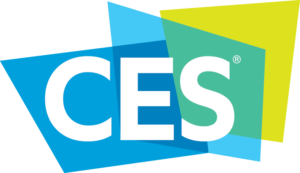 Going into the Consumer Electronics Show next week (Jan. 9-12) in Las Vegas, broadcasters will have one eye on exciting new products and services and the other on the rollout of the new ATSC 3.0 broadcast standard that the FCC authorized last November.
Going into the Consumer Electronics Show next week (Jan. 9-12) in Las Vegas, broadcasters will have one eye on exciting new products and services and the other on the rollout of the new ATSC 3.0 broadcast standard that the FCC authorized last November.
“It’s an implementation year,” said Anne Schelle, Pearl CEO. Pearl, a coalition of major TV station groups, is “developing deployment plans [for the standard] — the application layer, the security framework, and the addressable advertising framework,” she said.
At CES, Pearl will meet with consumer electronics manufacturers about 3.0 and may conduct private demonstrations of its capabilities, Schelle said.
It may also have more to say about its upcoming Phoenix Model Market, in which 10 stations will begin experimenting with 3.0-based enhancements and services. The participating stations belong to Scripps, Fox, Meredith, Nexstar, Tegna, Telemundo and Univision.
Apart from the continuing technical issues, one chief area of interest is figuring out what 3.0 will look like to consumers, Schelle said. “How do you show them that they are seeing 3.0 content?”
Some of the functionality consumers might see could be akin to what they get via pay TV providers such as Comcast’s Xfinity service, she said.
New TV sets, which will be compatible with both ATSC 1.0 and 3.0 standards, will help this along. But don’t look for these products at CES this year — think of 2019 or 2020 and beyond.
“ATSC 3.0 is a big opportunity long-term,” said Adam Ostrow, chief digital officer at Tegna, a Pearl member. “We think of it as a platform, not unlike the iPhone, where a whole ecosystem of new products and services can be created on top of it.”
But Kerry Oslund, VP of strategy and business development for Tribune Media, said 3.0 puts broadcasting in the digital game.
“Broadcast-as-a-Service also will put us squarely into the Internet of Things ecosystem, as it can deliver bits with incredible efficiency to an infinite number of devices in our marketplaces.”
All this will help TV stations compete more directly with new digital media competitors — especially when it comes targeting of consumers for advertisers.
For consumers, the new standard looks to bring a better TV experience, such as what they get with digital media — search, social media and other engagement functions.
CES is primarily a showcase for the latest in consumer electronics, but is also a major conference that will, among other things, address the continuing disruption of media, particularly TV.
Missing from the agenda will be FCC Chairman Ajit Pai. Last evening, CES announced that Pai would not be able to make his on-stage interview with CES CEO Gary Shapiro. No explanation was given.
On Wed., Jan. 10., a major CES panel, “Reimagining Television” features Randy Freer, CEO of Hulu, and John Martin, CEO of Turner, who will ponder the future of media content and technology companies getting into each other’s business.
Also on Wednesday, at the Variety Entertainment Summit at CES, Ben Sherwood, co-chair of Disney Media Networks and president of Disney-ABC Television Group, headlines a full day on the future of TV, “brand storytelling” and audience engagement.
David Zaslav, president-CEO of Discovery Communications will offer a keynote address on Jan. 10.
Other TV speakers: Nancy Dubuc, CEO of A+E Networks, Marcien Jenckes, president of advertising for Comcast Cable; Robert Kyncl, chief business officer for YouTube; and Michael Kassan, founder of media consultancy MediaLink.
TV executives at CES will be exploring for opportunities on the sprawling exhibit floors.
“CES is a place to search for business models, not just products and services,” said Oslund. “We are looking for emerging themes and ah-ha moments.”
Virtual home assistants look to be hot this year as more manufacturers hop on board. Sony, for instance, includes an Amazon Alexa app in its smart TVs.
“Tribune has early experiments going on with voice activation and home assistants,” said Tribune’s Oslund. “If voice activation makes it simpler to access our information products and services, we want to be a part of it.”
“Something on my radar will be autonomous vehicles and how they’re integrating media experiences, which could open up a huge new mode of content consumption,” said Tegna’s Ostrow. “On a more practical level, CES is also a good opportunity to explore the latest wares that may be useful to our storytellers, like 360 cameras and smartphone peripherals.”


